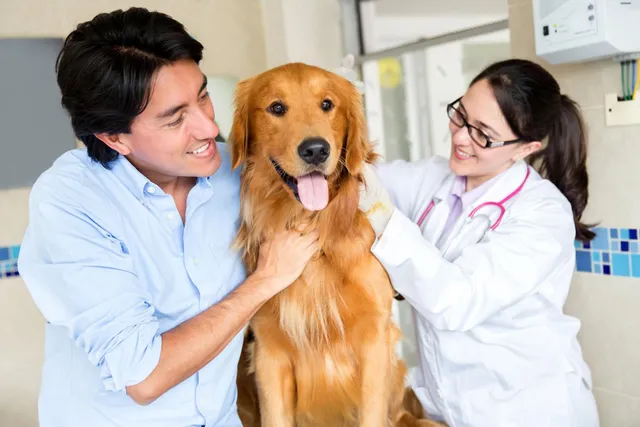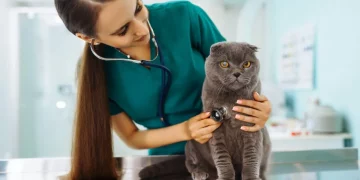Our pets are beloved members of our families, and their health is paramount to their well-being and happiness. As pet owners, it’s our responsibility to ensure that our animals are not only well-fed and well-exercised, but also in good health. Recognizing the early signs of health issues can make a world of difference in preventing more serious problems from developing. Just like humans, pets can experience a variety of health issues, and being aware of the symptoms can allow you to take action swiftly and effectively. This guide will explore some common pet health problems, how to spot the symptoms early, and what actions you can take to help your furry friend stay healthy.
1. Signs of Digestive Issues
Pets, like humans, can experience digestive problems that can range from mild discomfort to more serious conditions. Digestive issues can often be tricky to spot at first, but there are common signs to look for.
1.1. Symptoms to Watch For
- Vomiting or Diarrhea: Occasional vomiting or diarrhea may not be an immediate cause for concern. However, if it becomes frequent or lasts for more than 24 hours, it could indicate something more serious, such as a gastrointestinal infection, food intolerance, or poisoning.
- Loss of Appetite: If your pet suddenly refuses food, it could be a sign of digestive distress or even a more serious issue like an infection or blockage.
- Excessive Drooling: Drooling, especially if it’s accompanied by discomfort or difficulty swallowing, could indicate nausea, gastrointestinal problems, or oral health issues.
- Lethargy or Weakness: If your pet seems unusually tired or weak, it could be a result of dehydration from vomiting or diarrhea, or it could signal an underlying illness.
1.2. When to Take Action
If your pet experiences vomiting, diarrhea, or a combination of these symptoms for more than a day, it’s best to consult with your veterinarian. Dehydration is a common concern in pets with digestive issues, so it’s important to address this early to prevent further complications.
2. Skin Problems and Allergies
Skin issues are common in pets, and they can often indicate allergies, parasites, or infections. Pets can experience discomfort from skin problems, and it’s important to spot symptoms early to prevent further irritation or infection.
2.1. Symptoms to Watch For
- Itching or Scratching: If your pet is constantly scratching or licking its skin, it could indicate allergies, dry skin, flea infestations, or a fungal or bacterial infection.
- Red or Inflamed Skin: Rashes, bumps, or red patches on your pet’s skin are common signs of an allergic reaction, infection, or parasite infestation.
- Hair Loss: If your pet is losing hair in patches, it could be due to fleas, ticks, or ringworm.
- Odor: A strong, unpleasant odor coming from your pet’s coat or skin can indicate a skin infection or fungal problem.
2.2. When to Take Action
If your pet’s itching or scratching persists for more than a couple of days, it’s a good idea to schedule a vet visit. In some cases, allergies can be treated with medications or dietary adjustments. If the skin issues appear to be related to parasites, your vet can recommend treatments like flea prevention.
3. Ear Infections and Problems
Ear infections are a common issue for both dogs and cats, especially those with long, floppy ears or those that spend a lot of time in water. Left untreated, ear infections can lead to chronic pain and hearing loss.
3.1. Symptoms to Watch For
- Scratching at the Ears: If your pet is frequently scratching at their ears or shaking their head, it may indicate an infection or discomfort.
- Ear Discharge: Brown, yellow, or bloody discharge from the ears is a sign of infection or ear mites.
- Odor: A foul smell coming from your pet’s ears is another common symptom of an ear infection.
- Redness or Swelling: If the inner ear appears red or swollen, this is a strong indication that something is wrong, such as an infection or inflammation.
3.2. When to Take Action
Ear infections can worsen if left untreated, so it’s important to address any signs of ear discomfort right away. If you notice discharge, redness, or odor, it’s time to schedule a visit with your veterinarian. They can diagnose the infection and recommend appropriate treatment, such as ear drops or oral antibiotics.

4. Dental Health Issues
Dental health is often overlooked in pets, but poor oral hygiene can lead to serious health problems. In fact, dental disease is one of the most common health issues for dogs and cats.
4.1. Symptoms to Watch For
- Bad Breath: While pets can have a slight odor to their breath, persistent bad breath can indicate dental disease, such as gum infection, periodontal disease, or even tooth decay.
- Difficulty Eating or Dropping Food: If your pet is having trouble chewing or drops food from their mouth, it may be due to painful teeth or gums.
- Excessive Drooling: Persistent drooling can be a sign of an infection or dental disease.
- Red or Bleeding Gums: If your pet’s gums appear red, swollen, or bleed when they chew or when you brush their teeth, it could indicate gum disease or infection.
4.2. When to Take Action
Regular dental checkups are essential for pets, as they can help identify dental disease early. If your pet shows any of the signs mentioned above, schedule a visit with the vet. Dental cleanings and treatments can help keep your pet’s teeth healthy and prevent more serious issues, such as tooth loss or infection.
5. Joint and Mobility Issues
As pets age, they can experience joint and mobility problems that may lead to pain and decreased activity levels. Early detection of mobility issues can help manage symptoms and improve your pet’s quality of life.
5.1. Symptoms to Watch For
- Limping or Stiffness: If your pet is limping, favoring a leg, or showing stiffness after rest, it could be a sign of joint problems, such as arthritis.
- Difficulty Climbing Stairs or Jumping: Pets with joint pain may struggle to climb stairs or jump onto furniture or into cars.
- Reduced Activity Levels: A decrease in activity or reluctance to go for walks or play can indicate joint pain or discomfort.
- Behavioral Changes: Pets with chronic pain may become irritable, anxious, or withdrawn.
5.2. When to Take Action
If you notice that your pet is limping, showing signs of discomfort, or has trouble with mobility, it’s time to visit the vet. Early intervention can make a big difference in managing arthritis and other joint problems. Your vet may suggest supplements, pain relief medications, or joint-friendly diets to help your pet feel more comfortable.
6. Urinary and Kidney Issues
Urinary problems and kidney disease are common in older pets, but they can affect animals of all ages. Symptoms can range from frequent urination to more severe conditions like kidney failure.
6.1. Symptoms to Watch For
- Frequent Urination or Accidents: If your pet is urinating more frequently or having accidents in the house, it could indicate a urinary tract infection (UTI) or kidney issues.
- Straining to Urinate: Struggling to urinate or showing signs of pain while urinating can be a sign of a blockage, infection, or other urinary issues.
- Blood in the Urine: Blood in the urine is a serious sign of infection or other complications.
- Dehydration or Excessive Thirst: If your pet is drinking more water than usual or seems dehydrated, it could be a sign of kidney disease.
6.2. When to Take Action
Urinary issues, particularly those involving blood or pain, require immediate veterinary attention. If your pet is experiencing any of the symptoms listed above, schedule an appointment with your vet as soon as possible. Kidney disease and infections are treatable when caught early, but delayed treatment can result in more serious health complications.
7. Conclusion: Prevention and Regular Checkups
Recognizing the early signs of common pet health issues can make a huge difference in ensuring your pet remains happy and healthy. Regular checkups with your vet, along with preventative care such as vaccinations and parasite control, can help catch potential health problems before they become serious.
By keeping an eye out for symptoms such as changes in appetite, behavior, or mobility, and taking action early, you can help your pet live a long, healthy, and happy life.























































